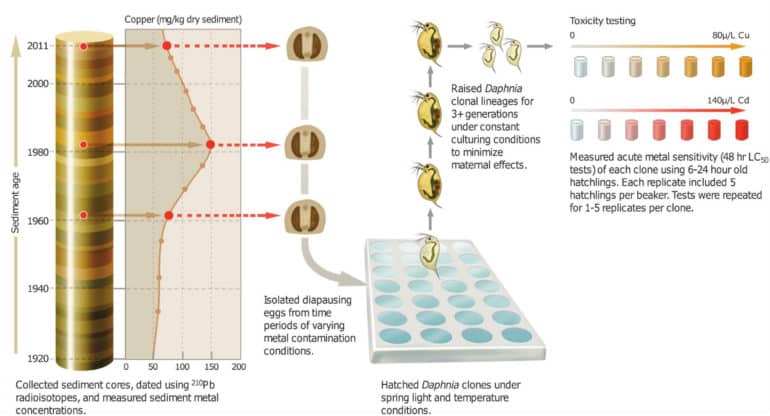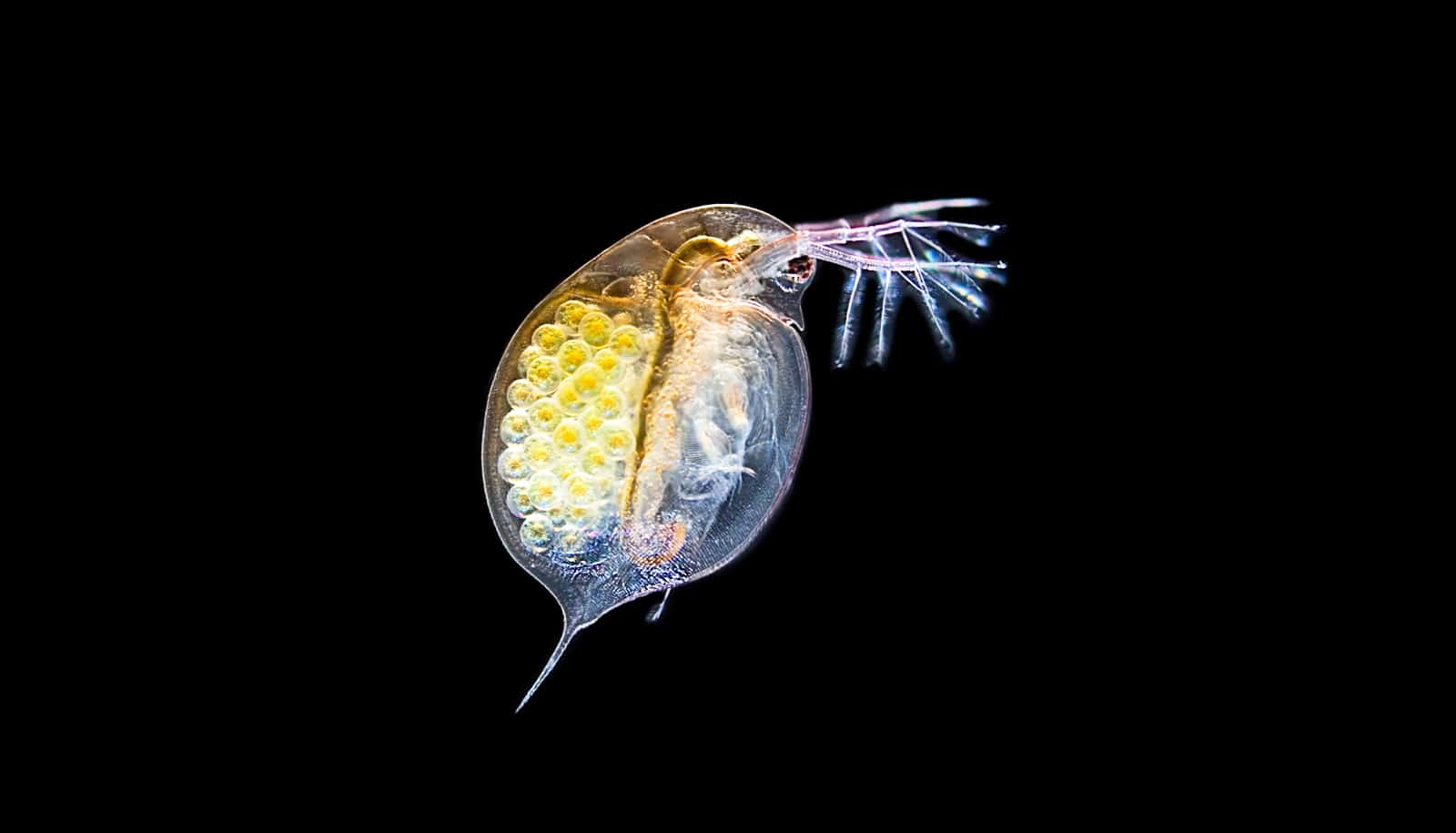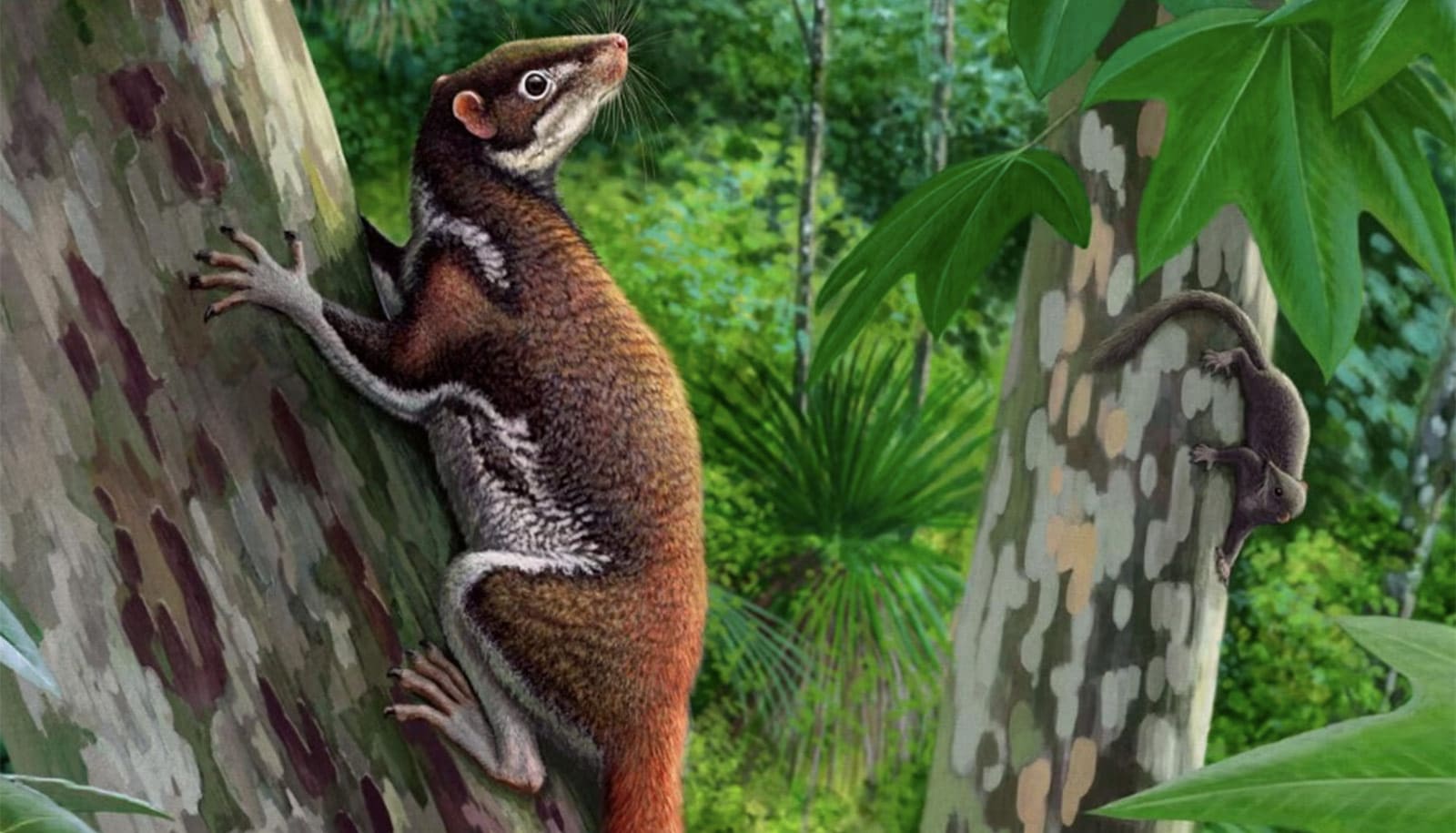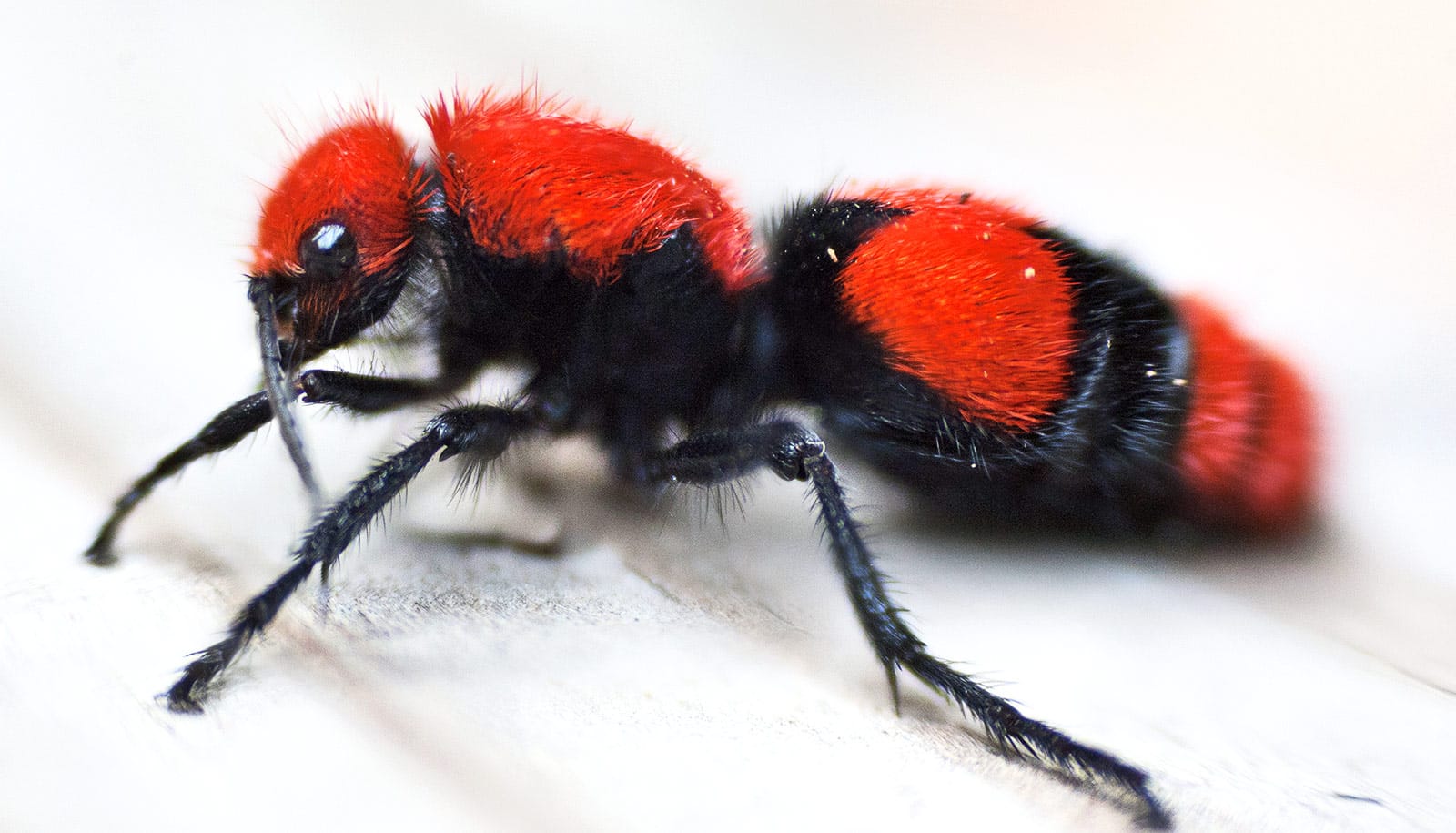Combining techniques from a field called “resurrection ecology” with a look at lake sediments reveals surprising evolutionary responses to heavy-metal contamination over the past 75 years.
Mary Rogalski hatched long-dormant eggs of Daphnia, tiny freshwater crustaceans also known as water fleas, that accumulated in the lake sediments over time. After rearing the critters in the lab, she exposed them to various levels of two heavy metals to see how their sensitivity to the environmental contaminants changed over time. Surprisingly, she found that sensitivity to copper and cadmium increased as the levels of those toxic metals rose in the lakes she studied.
“These findings are unexpected because evolutionary theory predicts that a population should adapt quickly to a stressor like this and become less sensitive to it, not more sensitive to it. It is difficult to explain the results of this study,” says Rogalski, a postdoctoral researcher in the University of Michigan department of ecology and evolutionary biology.
In one of the lakes, Daphnia hatched from sediments dating to around 1990—when copper contamination was at its peak—were 46 percent more sensitive to copper exposure than individuals from the 1940s, a period with lower levels of copper contamination.

Rogalski reports her finding in the journal The American Naturalist. The study was part of her dissertation research at Yale University and involved fieldwork at three Connecticut lakes.
Rogalski then estimated sediment ages based on the presence of radioactive materials and measured concentrations of copper and cadmium in the layers back to the late 1800s. Copper contamination in the lakes was largely due to yearly applications of copper sulfate to control nuisance algae. The cadmium likely came from industrial and agricultural development in the region over the past century.
In the lab, Rogalski isolated dormant or “diapausing” Daphnia ambigua eggs from various dated sediment layers, then hatched and raised them. She measured Daphnia’s changing sensitivity to copper and cadmium by exposing them to various levels of the metals in glass flasks and determining the median lethal concentration.
In one Connecticut lake where copper contamination has declined recently, she found that Daphnia remain sensitive to the metal 30 years after peak exposure.
Mercury lurks in W. North America’s wildlife
“It is difficult to know what mechanisms are driving this evolutionary pattern,” Rogalski says. “Even so, this research suggests that we need to do more to uncover both the drivers and implications of maladaptation in nature.”
Paleolimnology is the study of ancient lakes from their sediments and fossils. The branch of experimental paleolimnology that Rogalski used in this study has been dubbed “resurrection ecology” by its practitioners.
Human activities can drive strong and rapid evolutionary changes in wild animal populations. Those evolutionary responses often leave the population better able to cope with the new environmental conditions, a process called adaptation through natural selection.
For example, a newly introduced pesticide may kill the vast majority of the insects it targets, but the survivors can then give rise to a pest population that is resistant to the chemical.
Some populations, however, fail to adapt to changing environments or can wind up worse off than they were beforehand, an occurrence known as maladaptation. Maladaptive outcomes are less common than adaptive ones and are less studied. In many cases, it is impossible to examine a population’s response to a stressor over multigenerational timescales without conducting a long-term study that could take decades to complete.
Frog embryos can opt to leave the egg early
The Daphnia crustacean, with its diapausing eggs, provides a time machine of sorts, allowing researchers to examine long-term evolutionary responses to environmental stressors by reviving and rearing dormant organisms trapped in lake bottoms.
“Daphnia offer a system where examining historic evolutionary trajectories is possible,” Rogalski writes in the study. “Hatching diapausing eggs from dated lake sediments and culturing clonal lineages in the lab allows us to examine how populations change through time and the genetic basis underlying those changes.”
The Yale Institute for Biospheric Studies supported the work.
Source: University of Michigan



